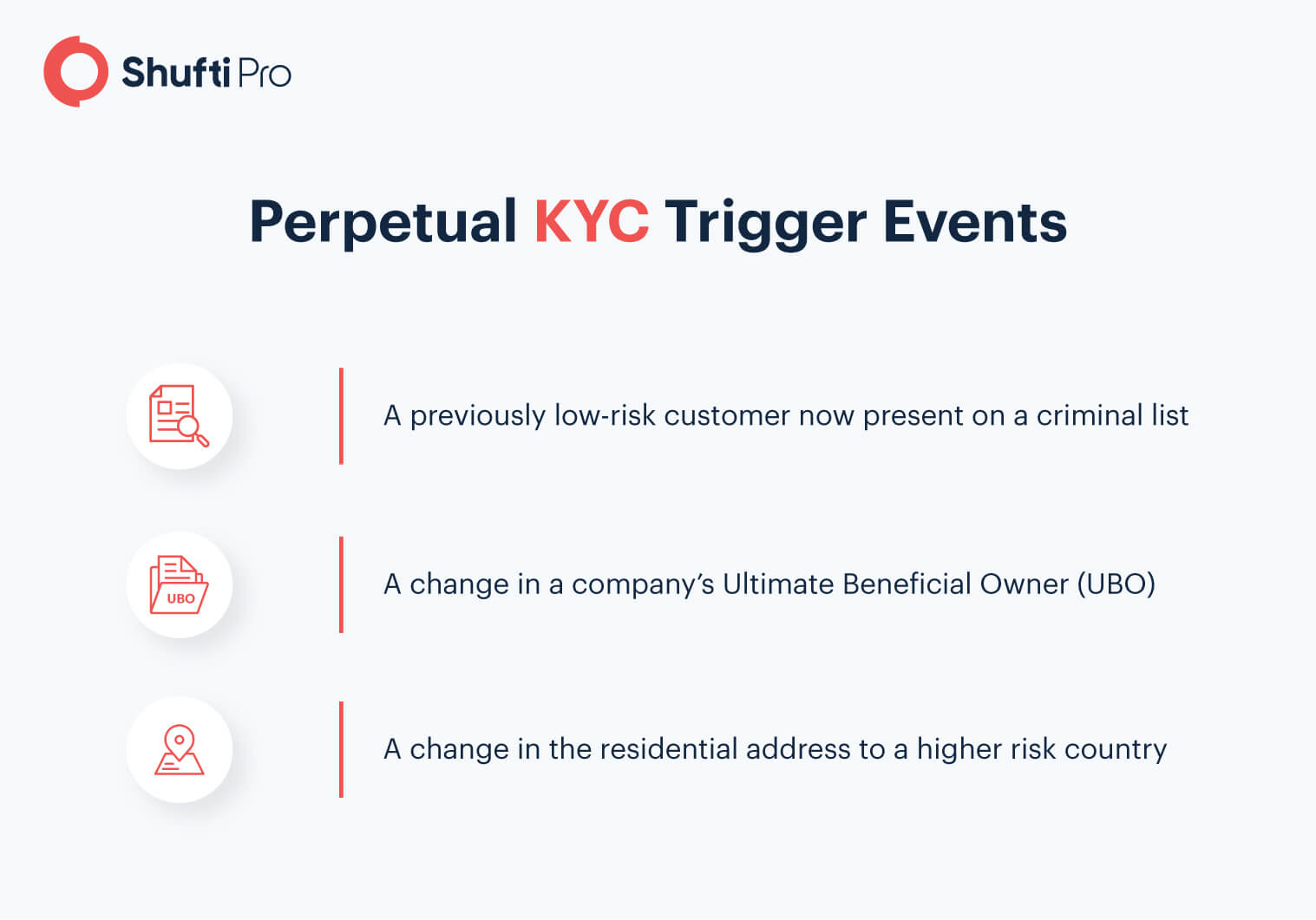Periodic to Perpetual KYC — The Changing Landscape in Banks

The employment of effective Know Your Customer (KYC) procedures has long been a challenge for financial institutions, resulting in investments worth billions of dollars and numerous non-compliance penalties for major industry leaders. To counter the complexity and inconvenience of conventional methods of identity verification, KYC procedures must evolve in a way that lowers down the cost for a company while also maintaining regulatory compliance.
The Current State of KYC in Banking
In a traditional set-up, KYC processes are implemented on a periodic basis, with the frequency of the reviews varying between every financial institution. However, a significant amount of deficiencies within the traditional periodic KYC process have reinforced the need for a transition.
But before we get to that, let’s take a look at what happens in a periodic KYC review process.
What is KYC Periodic Review?
Periodic KYC involves the simple procedure of submitting the latest identity and address documents to the bank. This is initially done when the customer opens a bank account and the information is then updated at periodic intervals.
The Periodic KYC Process
Typically, compliance officers review the following elements during the periodic AML and KYC process:
- Review of the customer’s information: This includes collecting and verifying their full name, date of birth, address, ID number, and the collection of the customer’s original ID documents to identify any material changes
- Screening of the customer against global and country-based watch lists and sanctions
- Reassessment of risk ratings in case of substantive changes in the ID documents (e.g. a different residential address)
- Periodic review of the customer’s transactions and comparing it against forecasted account activity (this is generally performed via fully automated identity verification and screening tools)
- Detection of potentially suspicious activities
Pinning Down the Problem
Responding back to periodic KYC data requests made by the bank drives customers crazy if handled incorrectly. At times, customers are even required to show up in person to have their documents verified. For most businesses, the emergence of artificial intelligence-backed identity verification solutions has eliminated the need for such manual methods of document verification. Nevertheless, a high amount of inefficiency still remains.
KYC experts are often caught up between the expectations of the bank and the customers. Repeatedly requesting for additional documents results in unsatisfied and frustrated customers — a situation that can prove to be detrimental to the financial well-being of a company.
With the bar on compliance being globally raised, the costs and resources associated with secure customer onboarding and periodic KYC checks have increased exponentially. Because of this, KYC procedures are often placed at the bottom of to-do lists, which ultimately harms the bank in the form of hefty non-compliance fines on top of reputational damage.
Is There An Alternative?
A basic solution to overcome the above-mentioned problems is to analyze the KYC process from the perspective of the customer i.e., the KYC procedures within a bank must be designed in such a way that the experience of the customer is optimized.
With the help of digital strategies – such as online customer portals, support for multiple channel communication, and direct engagement with bank branches or relationship managers, the inherent friction in obtaining the necessary customer documentation can be substantially reduced.
Further improvements in the efficiency, productivity, and customer experience can be gained by shifting from periodic KYC reviews to perpetual KYC.
What is Perpetual KYC?
In the perpetual “know your customer” process, also known as ongoing KYC, the information of the customer is updated based on specific triggers or events, rather than on the specified amount of elapsed time. Triggers for perpetual KYC can be determined by the bank’s internal KYC policies. Typically, it includes any event that indicates outdated information.

Once combined with robust KYC verification tools, customers can be engaged in the KYC process in a manner that makes sense to them and is not deemed as burdensome.
By gathering updated customer data on an ongoing basis, risk profiling can be enhanced which allows a bank to particularly focus on the customer accounts where the information or circumstances are changing. Additionally, whenever minor non-material changes occur, AI-powered automated processes will be updating records continuously.
What Makes Perpetual KYC Standout?
Due to ever-increasing AML and KYC regulations, having accurate and up-to-date customer information has become more crucial than ever. If banks aim to sustain themselves in a highly competitive market, they need to adopt a data-driven approach and perform ongoing KYC verification on their customers. The benefits of perpetual KYC include but are not confined to:
Mitigation of Friction in the Customer Relationship
For periodic KYC, relationship managers act as the middlemen. They are responsible for requesting current information and additional paperwork from customers and communicating this information back to KYC compliance officers. Repeated requests and resulting transaction delays, however, cause customers to feel dissatisfied with the bank’s customer service. This can result in long-lasting damage to the relationship.
Moving towards perpetual KYC procedures can eliminate this friction by greatly minimizing requests from clients. Customer information is updated based on event-based triggers, rather than a pre-defined period of time.
Risk Reduction
Imagine a scenario where a bank has onboarded a low-risk customer. In periodic KYC, their information is refreshed once every five years. After one year has passed in the five-year review period, this individual is nominated as the director of a firm and becomes a UBO. In addition, that firm’s parent company is domiciled in a high-risk territory. Unless the customer communicates this change to the bank, it may be left undetected for another four years. This can potentially increase the risk of financial crime exposure of the bank.
On the other hand, if this same bank had shifted towards perpetual KYC, the change in the customer’s circumstance would have been identified in mere seconds. Consequently, it would have initiated an immediate review and an updated risk assessment.
Key Takeaways
- In a traditional set-up, KYC is implemented on a periodic basis
- Periodic KYC has now become insufficient due to higher costs and lower levels of customer satisfaction
- Perpetual KYC has the ability to fill these gaps and provides an edge in the form of risk reduction and elimination of friction










